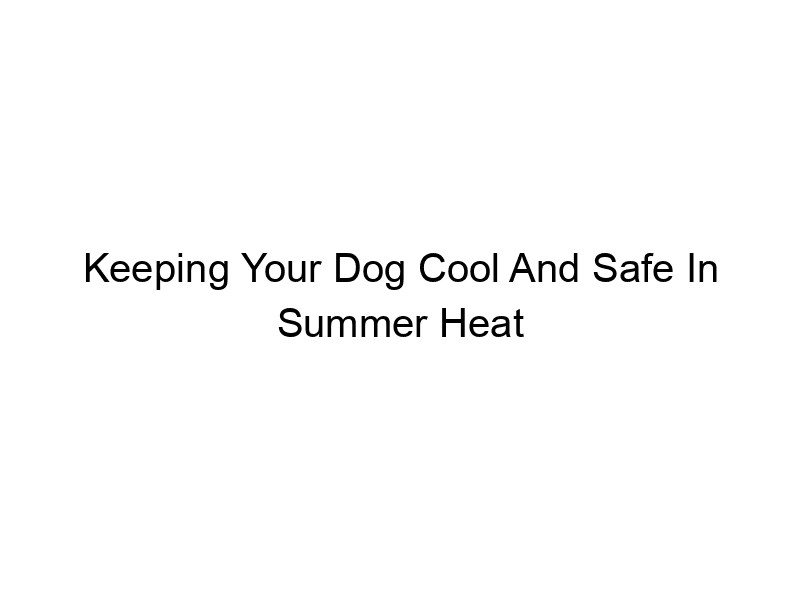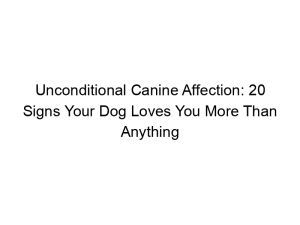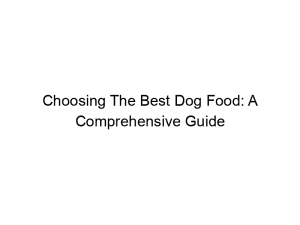Summer is a time for fun, but for our furry friends, extreme heat can be dangerous. This guide will provide you with comprehensive information on how to keep your dog cool and safe in hot weather, covering everything from recognizing heatstroke symptoms to choosing the best cooling products. We’ll explore various methods, practical tips, and crucial safety measures to ensure your canine companion enjoys a safe and comfortable summer. You’ll learn how to spot the signs of overheating, prevent heatstroke, and provide effective cooling relief.
Heatstroke in dogs is a serious, life-threatening condition. Early symptoms can be subtle, including excessive panting, drooling, lethargy, and weakness. More severe symptoms include vomiting, diarrhea, staggering gait, and collapse. Immediate veterinary attention is crucial if you suspect heatstroke. The faster you act, the better the
chances of a full recovery. Remember, prevention is always better than cure.
Factors Contributing to Heatstroke
Several factors increase a dog’s risk of heatstroke. These include breed (brachycephalic breeds like Bulldogs and Pugs are particularly vulnerable), age (puppies and senior dogs are more susceptible), obesity, underlying health conditions, and strenuous activity in hot weather. Even seemingly short walks on a hot day can lead to overheating.
Preventing Heatstroke: Proactive Measures
Prevention is key. Avoid strenuous exercise during the hottest parts of the day. Provide ample shade and access to fresh, cool water at all times. Consider investing in a cooling mat or vest for added protection, especially for at-risk breeds. Never leave your dog unattended in a parked car, even for a few minutes – temperatures inside a vehicle can rise rapidly and lethally.
Hydration is Key: Ensuring Your Dog Drinks Enough Water
Water Intake Strategies
Dehydration is a significant contributor to heatstroke. Ensure your dog always has access to fresh, cool water. Consider adding ice cubes to their water bowl to keep it extra refreshing. If your dog is reluctant to drink enough, try offering them water from a different bowl or in a different location. You might also consider electrolyte supplements (consult your vet first), particularly after strenuous activity.
Cooling Your Dog Down: Effective Strategies
Cooling Mats and Vests
Cooling mats use evaporative cooling or gel technology to draw heat away from your dog’s body. Cooling vests offer a similar benefit, especially for dogs with short or thin coats. These products are widely available in various sizes and styles. Choose a mat or vest that is well-made and durable.
Fans and Air Conditioning
Fans can provide a gentle breeze, offering some relief from the heat. However, fans alone are not sufficient to prevent heatstroke, particularly in extremely hot conditions. Air conditioning is the most effective method of cooling a space, and it is highly recommended to keep your dog in an air-conditioned environment during the hottest parts of the day.
Cooling Baths and Sprays
A lukewarm bath or a cool spray of water on their paws and belly can provide immediate relief. Avoid using ice-cold water, as this can cause shock. Focus on areas with less fur, such as their paws and belly. A damp towel can also provide temporary cooling.
Choosing the Right Cooling Gear: A Buyer’s Guide
Types of Cooling Mats
Cooling mats come in various forms: gel-filled mats, self-cooling mats, and evaporative cooling mats. Gel-filled mats maintain a consistently cool temperature, while self-cooling mats use the dog’s body heat to initiate the cooling process. Evaporative cooling mats use water to cool down the surface. Consider your dog’s size and weight when selecting a mat.
Cooling Vest Considerations
Cooling vests typically use evaporative cooling technology, often employing a damp material that cools as it evaporates. They come in various sizes and styles to accommodate different dog breeds and sizes. Choose a vest that is well-ventilated and allows for good airflow to prevent overheating. Ensure it fits your dog comfortably without restricting movement.
Other Cooling Accessories
Beyond mats and vests, you can explore other cooling options, including cooling bandanas, cooling toys filled with water, or even a small paddling pool for larger dogs. Experiment to find what works best for your dog’s preferences.
Grooming and Exercise: Modifying Routine for Summer
Adjusting Exercise Schedules
Adjust your dog’s exercise schedule to avoid the hottest parts of the day. Early mornings and evenings are ideal times for walks. Keep walks shorter than usual on extremely hot days, and prioritize shaded areas. If the pavement is too hot to touch comfortably with your bare hand, it’s too hot for your dog’s paws.
Grooming for Summer Heat
Dogs with thick coats may benefit from a professional grooming session to remove excess fur. This helps improve airflow and reduces the risk of overheating. Regular brushing at home can also help remove loose fur.
Recognizing and Responding to Heatstroke: Emergency Procedures
Immediate Actions
If you suspect your dog is suffering from heatstroke, immediate action is critical. Move your dog to a cool, shaded area, apply cool (not ice-cold) water to their paws, belly, and groin area, and offer small amounts of cool water to drink. Contact your veterinarian or emergency animal hospital immediately.
Veterinary Care
Your veterinarian will likely administer intravenous fluids to rehydrate your dog and help lower their body temperature. They may also perform other treatments, such as administering oxygen or medications to support their respiratory and circulatory systems.
Creating a Cool Home Environment for Your Dog
Home Cooling Strategies
Keep your home cool using air conditioning or fans. Ensure your dog has access to the coolest areas of the house, such as tiled floors or a shaded spot near a window. Consider using window coverings to reduce solar heat gain.
Providing Shade Outdoors
If your dog spends time outdoors, provide ample shade using a dog house, a large umbrella, or other shade structures. Ensure the shade structure is positioned to provide shade during the hottest parts of the day.
Dietary Considerations in Hot Weather
Adjusting Food and Water
Ensure your dog has access to fresh, cool water at all times, particularly after exercise. Consider offering them smaller, more frequent meals in hot weather to avoid digestive upset.
Protecting Your Dog’s Paws
Paw Protection Measures
Hot pavement can burn your dog’s paws. Walk your dog on grass or other cool surfaces whenever possible. Consider using booties to protect their paws when walking on hot surfaces.
Travel Safety: Tips for Keeping Your Dog Cool While Traveling
Travel Precautions
If you are traveling with your dog in hot weather, ensure they have access to plenty of water and shade. Never leave them unattended in a parked car. Use a pet carrier or crate that provides adequate ventilation.
Choosing the Right Dog Bed for Summer
Summer-Appropriate Bedding
Opt for breathable dog beds made from materials that allow for good airflow, such as cotton or mesh. Avoid using thick, plush beds that trap heat.
Long-Term Health Strategies for Hot Weather
Proactive Health Management
Regular veterinary checkups are crucial for identifying any underlying health conditions that could make your dog more susceptible to heatstroke. Maintain a healthy weight for your dog to reduce their risk of overheating.
Frequently Asked Questions
What are the most common signs of heatstroke in dogs?
Common signs include excessive panting, drooling, lethargy, weakness, vomiting, diarrhea, staggering gait, and collapse. Early detection is crucial for successful treatment.
How can I tell if my dog is dehydrated?
Signs of dehydration include dry gums, sunken eyes, lethargy, and loss of skin elasticity (the skin doesn’t snap back quickly when pinched). If you suspect dehydration, offer your dog small amounts of cool water frequently.
Should I give my dog ice cubes to cool down?
While a few ice cubes in their water bowl are fine, avoid giving large quantities of ice directly to your dog, as this could cause stomach upset.
What kind of cooling vest is best?
The best cooling vest depends on your dog’s size and activity level. Look for vests made from breathable materials and featuring evaporative cooling technology. Ensure it fits properly.
Can I use a fan to cool my dog down?
While a fan can offer some relief, it’s not a complete solution, especially in extreme heat. Fans should be used in conjunction with other cooling methods, like air conditioning.
How often should I check my dog for signs of overheating?
Regularly monitor your dog, especially during hot weather, paying close attention to their panting, behavior, and overall demeanor. Take breaks frequently during walks.
Is it okay to shave my dog’s fur in summer?
Shaving your dog’s fur isn’t always recommended, as it can remove their natural protection against sunburn. Excessive grooming may be harmful to their coat and skin.
What should I do if my dog collapses from heatstroke?
This is a medical emergency. Immediately move your dog to a cool place, apply cool water, and seek immediate veterinary attention.
Final Thoughts
Keeping your dog cool and safe during hot weather requires vigilance and proactive measures. Understanding the signs of heatstroke, implementing preventative strategies, and having a plan for emergency situations are crucial for ensuring your furry friend stays healthy and happy throughout the summer months. Remember, access to fresh water, shade, and appropriate cooling measures are essential. By following the tips in this guide, you can help keep your canine companion safe and comfortable during the hottest days of the year. Don’t hesitate to reach out to your veterinarian with any questions or concerns regarding your dog’s health and well-being during summer. A proactive approach is always the best approach when it comes to protecting your beloved pet from the dangers of extreme heat.




